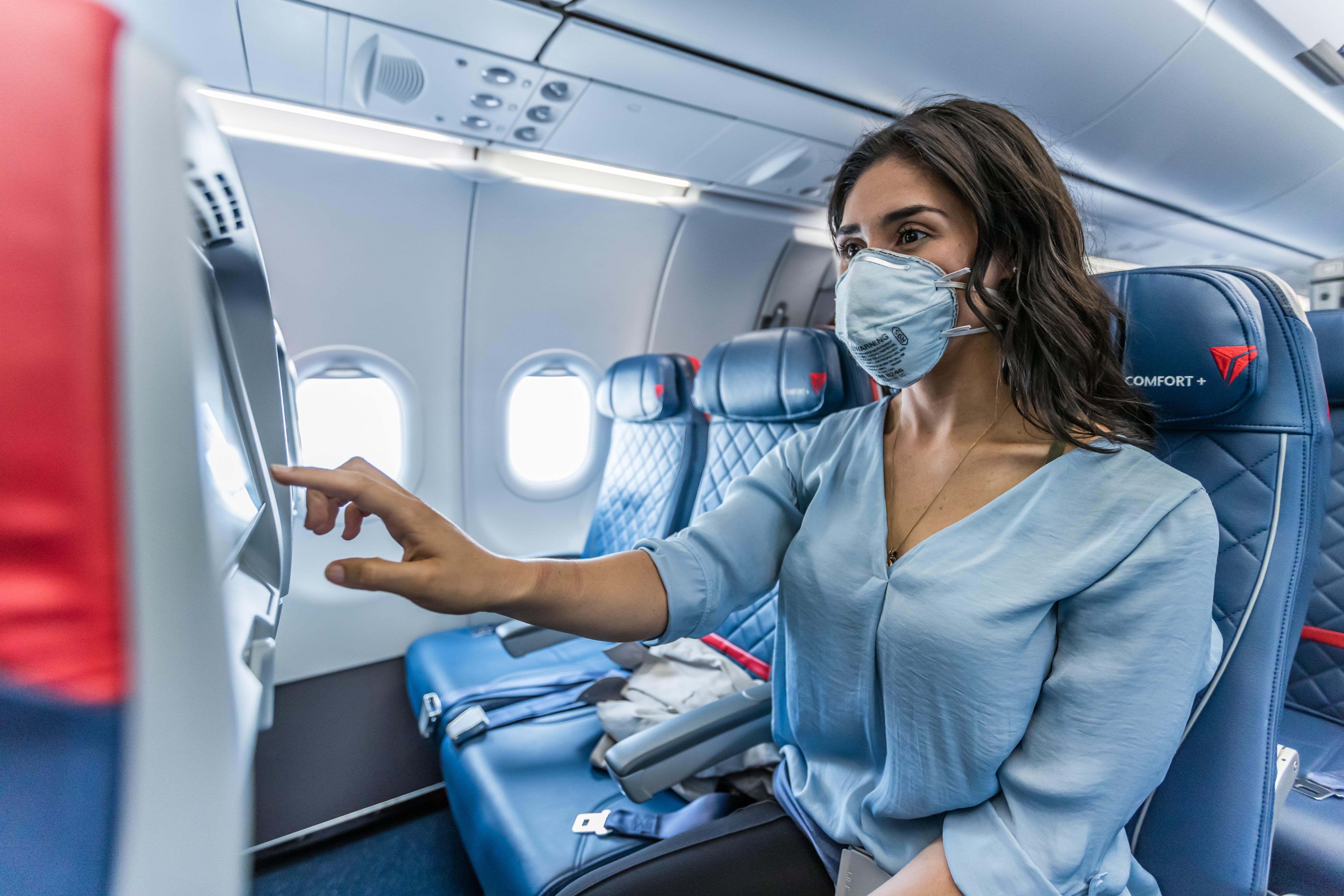
Delta Air Lines will continue blocking sales of middle seats on many of its aircraft through at least April 30, extending a policy the airline hopes will differentiate from competitors amid the COVID-19 crisis.
Atlanta-based Delta is the last US airline to continue the practice into 2021. Southwest Airlines started selling all seats on Dec. 1, 2020.
Delta’s middle-seat policy applies across its entire mainline narrowbody and regional fleet, while widebody cabins are currently being booked to capacity. The carrier is also limiting first-class cabin capacity to 50% by blocking off all adjacent seats.
“We want our customers to have complete confidence when traveling with Delta, and they continue to tell us that more space provides more peace of mind,” Delta chief customer officer Bill Lentsch said in a statement.
“We’ll continue to reassess seat blocking in relation to case transmission and vaccination rates, while bringing back products and services in ways that instill trust in the health and safety of everyone on board.”
Speaking recently on the carrier’s 2020 fourth-quarter earnings call, Delta president Glen Hauenstein noted the company outperformed its peers on passenger revenue last year, despite offering fewer seats for sale.
“This is a testament to customers' willingness to pay a premium for the Delta difference,” Hauenstein said.
Delta CEO Ed Bastian has not indicated when the company will stop blocking middle seats, saying only that the decision “will very much be driven by customer demand.” As vaccination drives progress and load factors begin to tick up, Delta will lean on its middle seats “as a powerful tool” to add back capacity in a cost-efficient way. “No question about it, we are generating a meaningful premium” from blocking seats, Bastian said.
Delta’s practice of blocking seats has created a gap between its scheduled capacity and the amount of seats that are actually available for sale. In the 2021 first quarter, for example, Delta plans to deploy 45% of its 2019 levels of flown capacity, but only 35% of sellable capacity once blocked seats are accounted for. By comparison, American Airlines and United Airlines plan to offer 55% and 49% of 2019 capacity during the first quarter, respectively.
The decision to continue capping load factors comes as carriers report softening passenger demand in the first quarter, largely due to heightened travel restrictions amid concerns about new coronavirus mutations. During the week ending Feb. 4, passenger traffic screened by the US Transportation Security Administration (TSA) was down 62% compared to the same week in 2019, marking a slight decline from down 60% in mid-January, according to Raymond James.
Photo credit: Delta Air Lines





